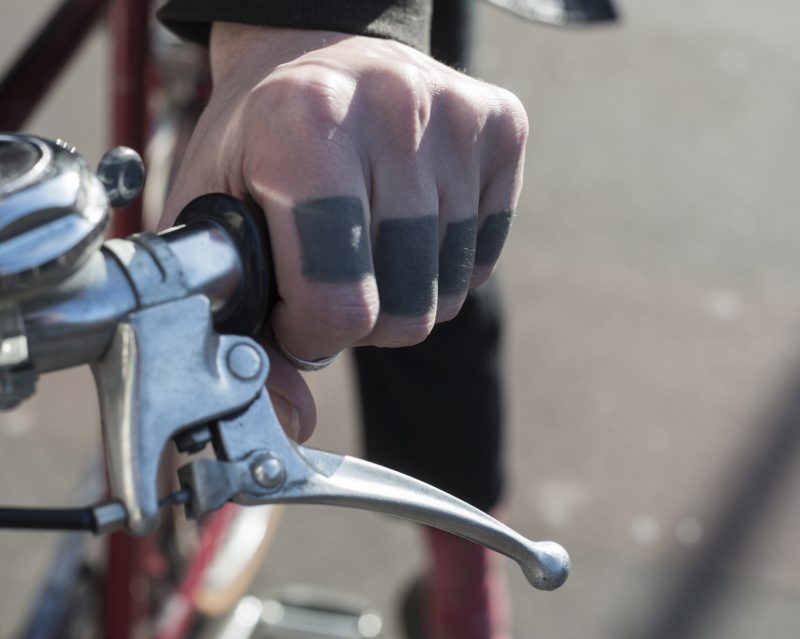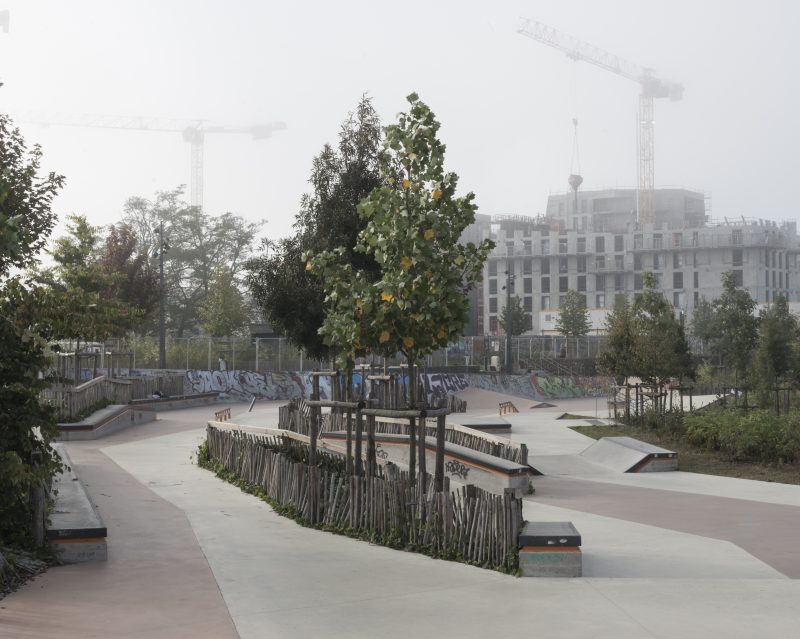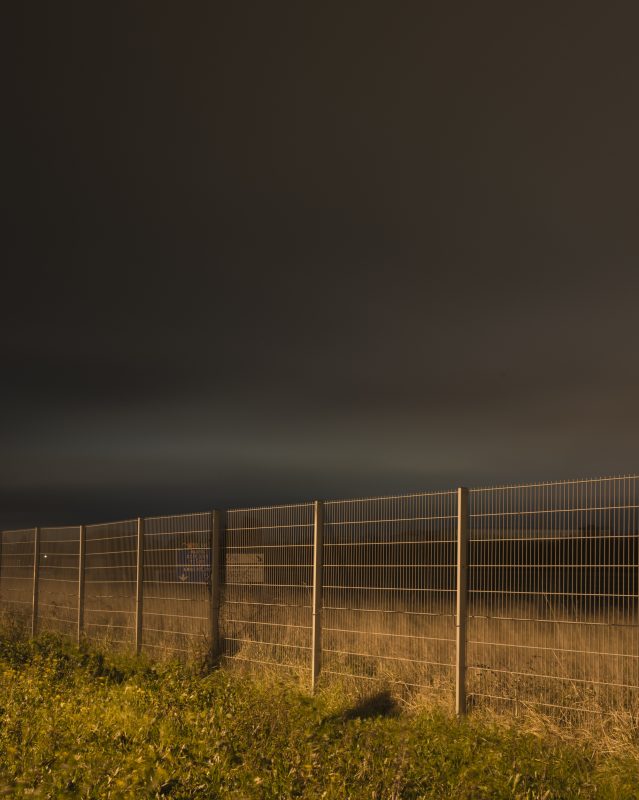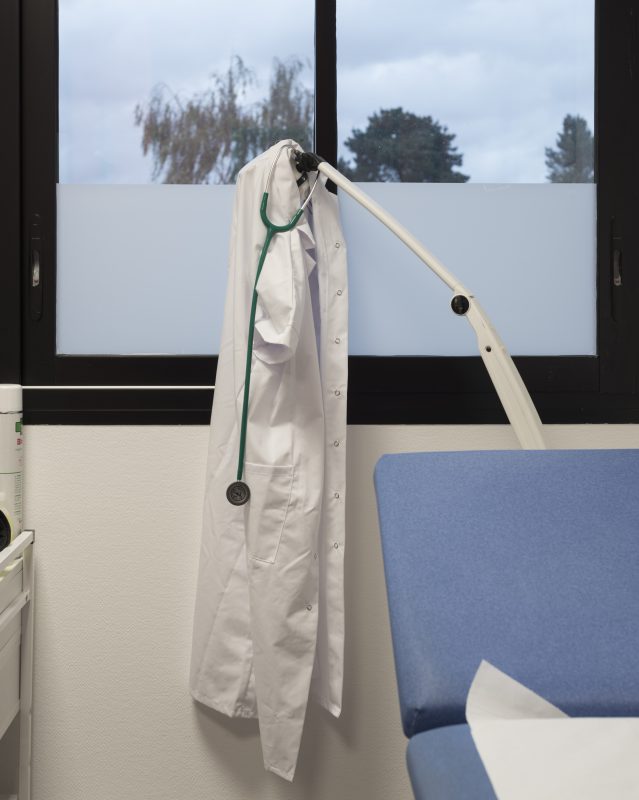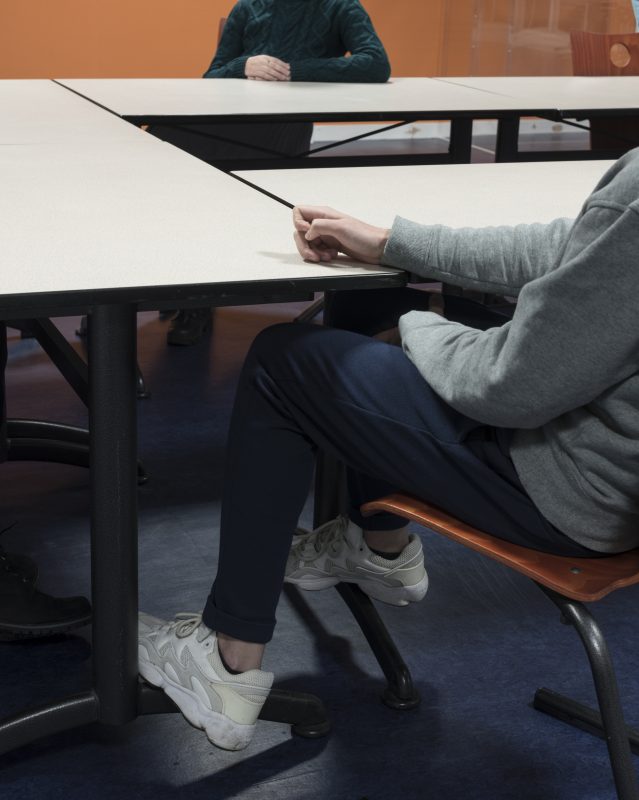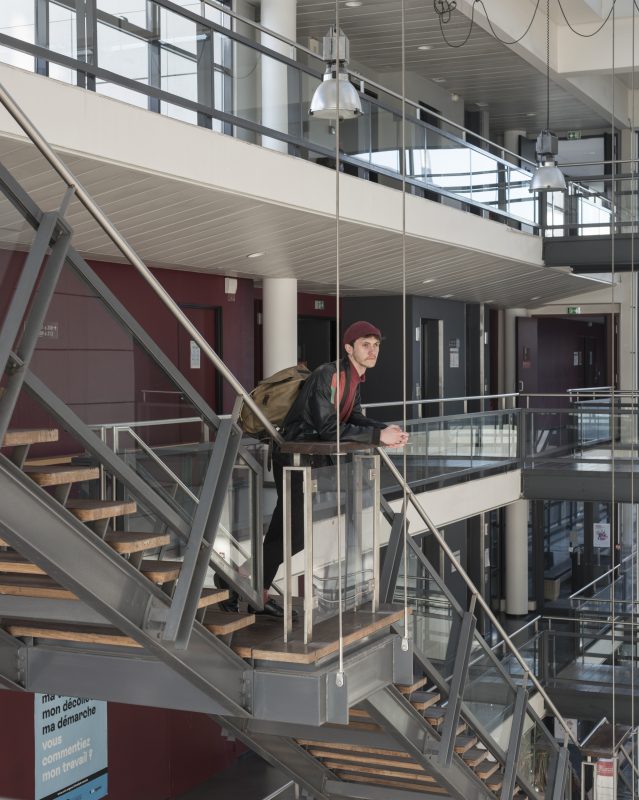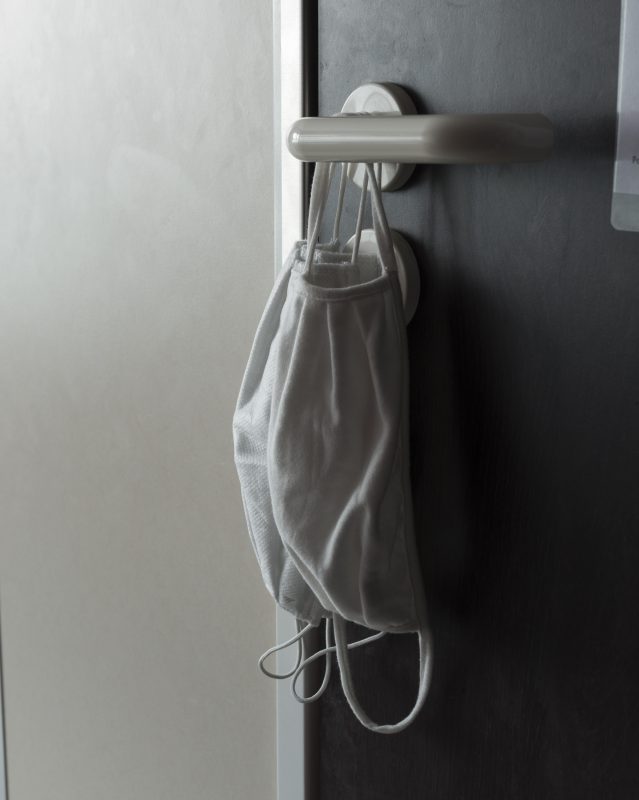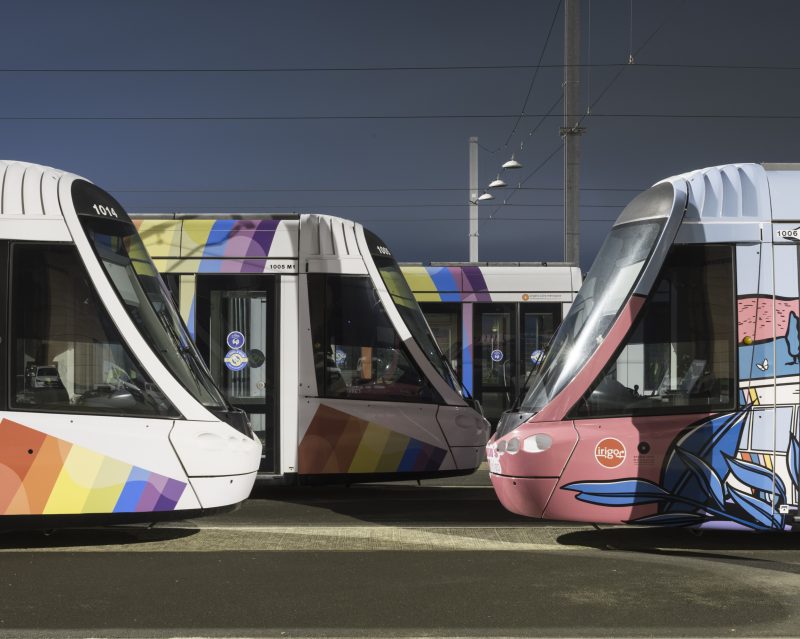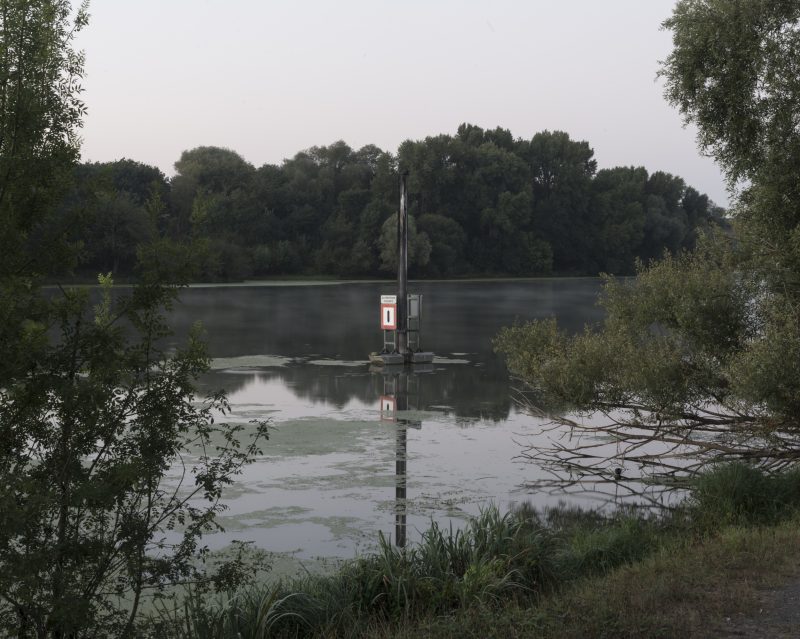Cette proposition signée Marc LOYON est le fruit d’un travail de recherche, elle se place à la croisée des chemins entre photographie et sciences humaines. La genèse du projet permet de la comprendre. Cette fois-ci, la proposition d’accueillir un artiste en résidence est venue de la Société Fédérative de Recherche (SFR) Confluences qui réunit les laboratoires de Lettres Langues et Sciences Humaines et Sociales. Le sujet se veut ambitieux car tout frais : la crise sanitaire et son impact sur les étudiants. Face à celle-ci, aussi inattendue qu’insolite en mars 2020, les enseignants ont dû adapter leurs cours et les étudiants s’adapter tout court. La vie quotidienne des uns et des autres a été bouleversée
en profondeur, dès la première vague, jusqu’à la quatrième, puis la cinquième.. Cette pandémie personne ne l’avait anticipée et nous l’avons tous vécue. Telle une épreuve… Aussi, les chercheurs du programme EnJeu[x] Enfance et jeunesse et de la Chaire « Pouvoir d’agir des enfants et des jeunes » se sont très vite interrogés sur les conséquences immédiates et psychiques de la pandémie sur la jeunesse, Claudine Combier en figure de proue, maitresse
de conférence, à l’Université d’Angers, HDR en psychologie clinique et psychopathologie au sein de l’UR CLiPsy, intervenante au SSU (service de Santé Universitaire) auprès des étudiants. L’objectif clairement recherché : croiser les travaux des labos, la richesse des mots et l’épaisseur des images. En évitant avec agilité le photoreportage ou l’illustration, Marc Loyon a mené un travail au long cours, patiemment construit et rythmé par plusieurs séjours à l’Université. Tel un anthropologue ou un scientifique, il a commencé par observer, arpentant la ville d’Angers, les campus de St-Serge, Belle-Beille, par questionner et recueillir des témoignages. Plus tard, c’est des paysages dont il s’est saisis. Ceux fantasmés dans une période empêchée, ceux si longtemps désertés et rêvés, jusqu’à approcher les territoires les plus intimes des chambres ou des logements étudiants. Autres vues intérieures : amphi, salle de spectacle,
étrangement une même caisse de résonance, le même vide abyssal… Puis sentiers et berges, parcs, bâtiments, la radioscopie du territoire est complète. Peu à peu les visages sont venus nourrir ses images, l’humain s’est imposé dans son travail photographique. Un portrait tout en pudeur, un regard songeur, une main qui tient le cap… Timidement mais avec certitude, place au vivant, comme l’espoir d’un retour à la vie d’avant.
Lucie Plessis, Direction culture de l’Université d’Angers.
Livre prévu en 2022, textes de Claudine Combier, Lucie Plessis, Fabien Ribéry, Dominique Sagot Duvauroux.
This proposition by Marc LOYON is the result of a research project and is at the crossroads of photography and human sciences. The genesis of the project allows us to understand it. This time, the proposal to host an artist in residence came from the Société Fédérative de Recherche (SFR) Confluences, which brings together the Lettres Langues and Human and Social Sciences laboratories. The subject is ambitious because it is very fresh: the health crisis and its impact on students. Faced with this crisis, which was as unexpected as it was unusual in March 2020, the teachers had to adapt their courses and the students had to adapt themselves. The daily lives of all of them have been profoundly disrupted
from the first wave to the fourth and then the fifth. No one had anticipated this pandemic and we all experienced it. The researchers of the EnJeu[x] Childhood and Youth programme and of the « Power of Action of Children and Youth » Chair very quickly began to question the immediate and psychological consequences of the pandemic on young people, with Claudine Combier as the leading figure, a lecturer at the University of Geneva.
Claudine Combier, a lecturer at the University of Angers, HDR in clinical psychology and psychopathology within the CLiPsy research unit, and a speaker at the SSU (University Health Service) for students. The clearly sought-after objective was to combine the work of the laboratories, the richness of words and the thickness of images. By skilfully avoiding photojournalism or illustration, Marc Loyon has carried out a long-term project, patiently constructed and punctuated by several stays at the University. Like an anthropologist or a scientist, he began by observing, surveying the city of Angers, the campuses of St-Serge and Belle-Beille, by questioning and collecting testimonies. Later, it was the landscapes that he took hold of. Those fantasized in a period that was prevented, those so long deserted and dreamed of, to the point of approaching the most intimate territories of the rooms or student housing. Other interior views: amphitheatre, auditorium,
Strangely, the same sounding board, the same abysmal emptiness… Then paths and banks, parks, buildings, the radioscopy of the territory is complete. Little by little, faces came to feed his images, the human being imposed himself in his photographic work. A portrait all in modesty, a dreamy look, a hand that holds the course… Timidly but with certainty, room for the living, like the hope of a return to the life of before.
Lucie Plessis, Cultural Department of the University of Angers.
Book planned for 2022, texts by Claudine Combier, Lucie Plessis, Fabien Ribéry, Dominique Sagot Duvauroux.









